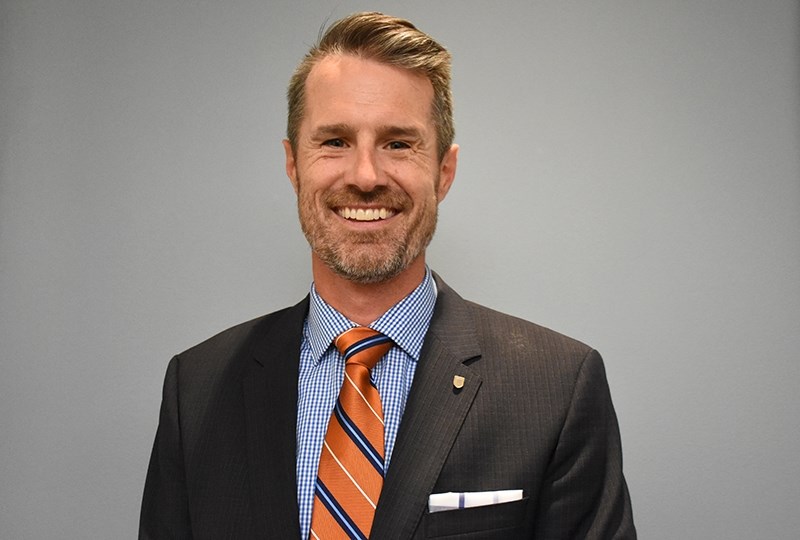By: Nicole Breedon
Published: June 4th, 2020

Webinar Speakers:
Nicole MacIntyre
Deputy National Editor for The Globe and Mail & Virtual Learning Webinar Host & Moderator

Neil Fassina
President of Athabasca University, Canada’s leading online university, and previous Provost and Vice-President Academic at the Northern Alberta Institute of Technology

Lena Patterson
Co-Executive Director at eCampus Ontario, a non-profit organization dedicated to driving the evolution of online and technology-enabled teaching and learning

Mathew Gerrits
Recent graduate, Vice-President of Education at Waterloo Undergraduate Student Association, and the Ontario Undergraduate Student Alliance (OUSA)

Alex Usher
President of Higher Education Strategy Associates (HESA), a consultancy based in Toronto which assists in government initiatives, as well as policy design for post-secondary institutions, and private agencies
A previous webinar segment of The Globe and Mail discussed what can be expected from the digital transition for postsecondary education programs. In this follow up segment, host Nicole MacIntyre of The Globe and Mail elaborates on some remaining questions and concerns, with particular attention to the logistics of this transition, as well as the pros and cons of digitalization.
This episode began with recognition to students and their feelings on this digital structuring to the education programs, and Mathew Gerrits identified that the concerns surrounding these changes have to do with finances verses the quality of education that can be expected. Alex Usher then pointed out that with the changes being made to academic programs, tuition should not be equated to the more hands on programs implemented in the past. However, Usher also points out that even though these changes to the programs may alter the quality of education in the years to come, institutions will have to grossly re-evaluate how to compensate for loss of funds in terms of international students, or students living in residence facilities. The budget concerning compensation for staff members and scholarships are expected to drastically increase in order to make up for the necessary changes to program structure, as well as student success and retention. If the cost of tuition decreases, it can be expected that the quality of education may do so as well.
The question then remained: how can academics make school more financially accessible for students? Lena Patterson assured that if there is nothing to be done regarding tuition changes for students in the next few years, alternative measures could be utilized to alleviate some financial stresses. These alternatives can include relying more on Open Education Resources (OER). OER’s are resources that can be accessed for free by students due to minimized copyright restrictions, and by replacing textbooks and software programs British Columbia and Ontario have estimated saving students 28 million dollars since having been implemented over the last few years.
With remaining concerns regarding quality of online education, Neil Fassina addressed some of the misconceptions regarding online education. Some have described online programs as a “learning alone” education, however, Fassina assured that as long as the environment for education is engaging, a variety of pedagogy and technologies are utilized, and the students genuinely want to learn, the experiences both online and in person can be matched. These environments take time to develop, but as long as the programs are structured appropriately, the students can thrive. In saying that, there must be support for academics & academies as they are trying to create something totally new, and there must be patience surrounding this adaption period.
Concerns surrounding the differences between online vs. in person environments really as to do with the fundamental idea of “the experience” so says Alex Usher. Where the experiential component of postsecondary education has to do with the opportunities and interactions with other students or professors, he then acknowledges how in many cases during the first year or so at any institutions many students have been known to identify feelings of alienation. First year classes are typically packed with students, and for the most part these students don’t interact, or make personal connections due to the overwhelming capacity. These environments typically don’t allow for one on one engagement even though there are many individuals around; this then highlights questions of concerns regarding the benefits of both online introductory classes that have online environments for interaction, or classrooms significantly reduced in capacity. While these changes to the academic structures are being innovatively structured in a very small timeline, it is crucial to acknowledge the benefits of these changes, and what components of postsecondary education can be enhanced with these adaptions.
Following this sentiment, accessibility became a prevalent point of conversation. In the first webinar segment hosted by Joe Friesen, one major concern discussed was accessibility to physical resources and materials such as computers, where the second point of concern was inconsistent broadband access across Canada. Both Mathew Gerrits and Lena Patterson agreed that these were two leading issues that must be acknowledged moving forward, and highlights specific individuals and cohorts who are at a disadvantage with this component of online education; however, Patterson raised the question on what accessibility actually looks like. Neil Fassina elaborated on this point, insisting that while access to resources is of course a leading concern for the transition online, the ability to work and learn from the comforts of home really allows for more access. Individuals who have social anxieties, individuals with hearing or seeing disabilities, or individuals who have dependents at home are allowed to access education from home through multiple platforms. Alongside this benefit, Lena Patterson put emphasis on the fact that this new structure of education will enhance digital fluency in the up and coming workforce. Digitization is not going away, nor will the need for digital fluency minimize in the future, and her point recognizes that although this form of education is new, and will take time to adjust to, there are many benefits in increasing the digital skillset of many students moving forward. This then also related to the overwhelming student interest in taking a gap year to compensate for the revolutionizing education structures. Lena Patterson then noted that in addition to gaining skills in digital fluency, students who do attend programs during this transitional year may be better equipped in the years to come, as it can be expected that the heavy reliance on online structures within the education system will not be going away any time soon. Should modified social distancing measures persist in the years to come, this transition to online course structure will probably be the first steps to a whole new system.
With consideration to the financial stress that may be put on institutions due to the “gap-year-dilemma,” Alex Usher noted where most concerns lie. There may be a small it is the international student demographic that will be affecting institutions the most. Usher noted that many colleges and some universities throughout Ontario and central Canada can expect to see the most drastic change in enrolment, with enrolment potentially decreasing by 40-50%. He addressed the point that in the upcoming months many institutions will need “financial bail outs,” and government assistance on many fronts. Neil Fassina then pointed out that while institutions will mostly be seeking for financial assistance and support, that the federal government has an opportunity to further invest in digital infrastructure that could drastically change the future.
Not all courses are structured the same, however; there must be acknowledgment to which programs will suffer the most from the reduced hands-on experiences available. Alex Usher then explained that although there will be certain measures put in place for programs that require hands-on experiences and placements, the structure of the co-op’s will have to change drastically and maintain very strict protocols and social distancing measures to ensure safety in education. Usher continued by noting that courses covering topics such as engineering or medicine will be particular need for restructured placement experiences.
Neil Fassina then brought up the points in which educators are responsible for designing these new structures for optimal success. Vast teams and must be brought together to facilitate environments where students can thrive, and significant onus is placed on the institutions for various platforms and resources to be immobilized. Additionally, students must be encouraged and stimulated to explore these technologies. Experiential learning can be conducted through online measures, but it is up to professors to facilitate these environments, and the students to access the resources as best they can. Mathew Gerrits added that when you have students that want to learn, the results of education, whether online or face-to-face, are quite similar. That is not to undermine the benefits of in class education; rather it is to acknowledge that responsibility to enhance an education is beyond the face-to-face experiences.
It cannot be emphasized enough: this is a transitional year, which will require patience for both educators and students. The trouble with this is that professors and institutions do not have a lot of time to adjust to this new way of education. The unfortunate reality is that some professors and institutions will be putting an immense amount of time and energy to structure this new era, and others may not. One concern that has been addressed time and time again comes back to the question of education quality, and should students have a negative experience, drop out rates can be expected to increase. Alex Usher leaves off with the point that for this time crunch affords institutions a unique opportunity to challenge academics and colleagues to embrace new systems.
